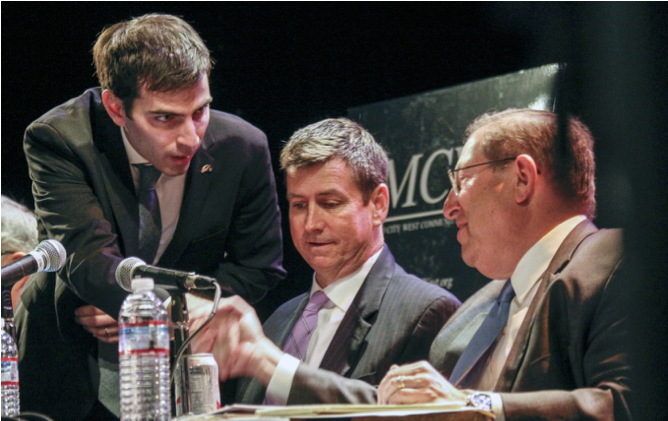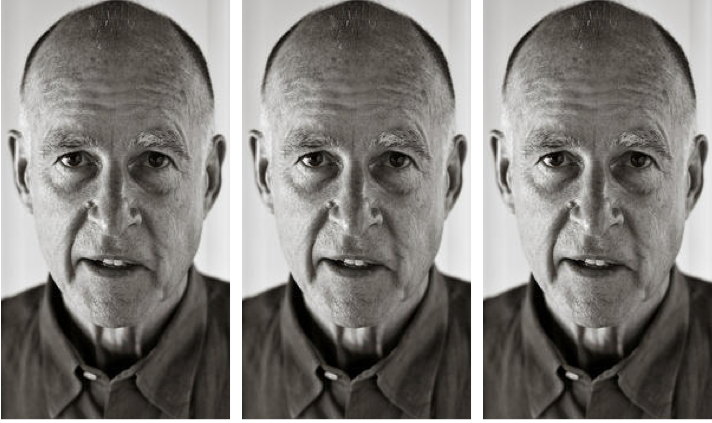Measure S: Be Careful What You Wish for… Especially if You’re Voting No
PLATKIN ON PLANNING-Both sides of the debate over Measure S have inflated expectations of what their vote will produce on March 7, especially those voting no. This is why I admonish both camps to be careful what they wish for.
What yes on S voters should expect after a victory
To my fellow supporters of Measure S, do not think that if S wins on Tuesday, Los Angeles’s skewed and dysfunctional planning system will quickly self-correct. This is a long war, and this will only be one victory. Future struggles will be over the following:
- The General Plan is only as good as its monitoring program. The General Plan Framework requires a special monitoring unit in the Department of City Planning to develop and track measures of the General Plan’s successes and failures. This unit was charged with presenting these findings in an annual reporting leading to revisions of the General Plan’s elements. City Planning never created this monitoring unit, and since 1997, City Planning staff has only presented five incomplete reports. None examined the successes or failures of the programs intended to implement the General Plan, and none resulted in any mid-course corrections.
- City Hall’s in-fill density hawks are already hatching schemes to circumvent Measure S if it passes. These presumably include accelerated Community Plan updates that will apply extensive ordinances up-zoning and up-planning to large swaths of Los Angeles.
- Re-code LA has already quickened some of its five-year program, and these zoning code revisions can become still another Measure S work around.
- The Department of Building and Safety’s turn-the-other eye approach toward real estate speculation and its low staffing levels ensure that contractors easily game the system. The mansionizers have already been doing this for years, and there is little stopping the mega-projects in the sights of Measure S from doing the same.
What no on S voters should expect with a victory
As for those no on S advocates (whose claims I have repeatedly rebutted through CityWatch), you particularly need to be careful what you wish for. We have heard your extravagant claims about tackling homeless, creating affordable housing, and generating jobs, but all a no on S vote does is maintain the City Hall status quo. On March 8 you will simply get more of what LA already has. This includes all of the following, plus more, since the 10 large real estate firms funding the no on S campaign will feel their oats with a victory. Likewise, the SG&A campaign firm they hired will have learned how to pitch all manner of trickle-down economic programs as answers to homelessness, displacement, gentrification, traffic congestion, suburban sprawl, and job creation.
But reality will soon assert itself, and City Hall will quickly forget these no S claims. In fact, they will be replaced by the following:
- City Hall’s pay-to-play system of soft corruption, that allows large real estate firms to make their illegal projects legal through City Council spot-zoning and spot-planning ordinances, will quickly reappear.
- Gentrification resulting from many forms of urban infill, including displacement through projects requiring City Council legislative approvals, will continue until the faucet of foreign investment in Los Angeles real estate finally runs dry.
- The magical, trickle down belief that luxury housing produces affordable housing through supply-and-demand and filtering will continue to produce more expensive housing, but nothing more. The rich will have abundant housing, while middle and low-income residents will still continue to double up, live in cars and converted garages, and flee to distant suburbs where developers have raw land to build middle class housing.
- The few affordable rental units built after a Measure S defeat will still result from SB 1818 density bonuses. And, the Housing Department will still refuse to inspect any of these affordable units to assure that low-income renters occupy them.
- City Planning’s accelerated General Plan updates will slow down, and the Department will continue to prepare and adopt new and updated elements out of sequence.
- Developers will continue to select their own EIR consultants, and the City Council will continue to ignore adverse EIR findings through boilerplate Statements of Overriding Considerations. Furthermore, these Statements will still claim that any structure built on near an express bus-line or a mass transit station is automatically transit-oriented. No decision maker will ever request verification of these pie-in-the-sky transit claims.
What liberals who hopped on the no on S campaign wagon should expect
As far as I can determine, your main argument to oppose Measure S was a repetition of the no on S campaign’s major talking point. “Measure S is a housing ban and an affordable housing ban.”
But, over the last year through my CityWatchLA planning columns and private communications, I have repeatedly asked for the addresses of any affordable housing constructed through the spot-zones and spot-General Plan Amendments stopped by Measure S. During this year only one person gave me an address that checked out. City Planning, however, has (inadvertently?) published the underlying reason for this lack of evidence for the claim that Measure S is an affordable housing ban.
As I have previously reported, according to City Planning’s CITYWIDE POLICY PLANNING 2016 PERFORMANCE METRIC REPORT, the amount of affordable housing built in LA through discretionary actions is tiny, only two percent of all new housing. Furthermore, developers build this housing through density bonuses when they include 10 to 20 percent low and moderate-income rental units in a market or luxury project. Because this inclusionary zoning process does not require any City Council ordinances, Measure S will leave it intact.
Second, Measure S is fully consistent with Measures H and HHH. This new supportive housing for the homeless can be constructed on all commercial lots in Los Angeles and R-3 and R-4 lots without any City Council ordinances. This includes parcels owned by the City of Los Angeles. In fact, City Controller Ron Galperin identified 9000 city-owned parcels, and they include over 200 commercial parcels, all of which could become a location for new by-right affordable housing.
The third reason undermining the alleged no on S affordable housing claim is that private developers can already legally build by-right affordable housing throughout the entire city of Los Angeles. They are not choosing to build this low-priced housing for a simple reason. They can't make enough profit at it. This means the real culprit in LA’s housing crisis is their profit-maximization business model. It has nothing to do with existing zoning or claims they need zone changes to build affordable housing.
Apparently the organizations and individuals aligning themselves with the big real estate companies opposing Measure S have forgotten a basic feature of large, free-market capitalist cities, like Los Angeles. Housing is a scarce commodity, not a right, under capitalism. Since developers will not build more than a few units through inclusionary zoning, there is an obvious progressive lesson. Either capitalism must change or the public sector must step in to build the low-income housing that the free market cannot and will not build. This was U.S. housing policy from the 1930s to the 1980’s, and the subsequent trickle-down market gimmicks (inherent to no on S) to replace these slashed programs have been an abysmal failure.
Debates about density
Some liberals have also cast Measure S as a homeowner-driven anti-density campaign. In their view homeowners want low density because they supposedly financially benefit from it. These liberals are, therefore, opposed to Measure S because they believe it is really a low-density voter initiative to oppose higher densities in Los Angeles. Some even argue that Measure S is a pro-urban sprawl measure.
But, these claims are not correct. It is a straw man argument, totally misrepresenting the proponents of Measure S before rebutting these imaginary advocates.
Since 1970 all legally adopted Los Angeles General Plan elements have called for planned density carefully linked to much denser public services and infrastructure, especially mass transit. This adopted vision requires a strong General Plan. City Hall must not only adhere to it, but also apply it to the City's capital and operating budgets. But none of this has happened because real planning is one City Hall’s lowest priorities. Without enormous pressure from below, it does not happen, and this is the open agenda of Measure S.
Instead, the alternative land use model behind no on S is greater density if it coincidentally appears through in-fill real estate speculation. This model is totally oblique to planned density. It also oblivious to where there is an unmet demand for greater density, as well as the supportive public infrastructure and services to support larger buildings, and more residents, employees, shoppers, and visitors.
As for who benefits from a defeat of Measure S, many liberal advocates have missed what is right in front of their eyes. It is not tenants, but the large real estate companies and their allied politicians who engage in pay-to-play. As for owners of single-family houses, they have little power in Los Angeles, as revealed by their interminable 11-year campaign to stop mansionization, as well as the closely related campaign against Small Lot Subdivisions. If homeowners were really in the driver’s seat, these two forms of real estate speculation would have been nipped in the bud long ago, not allowed to fester through one flawed ordinance after another.
Furthermore, other land use restrictions have the most tenuous relationship to home prices. For example in the late 1980s, AB 283 forced the City of Los Angeles to make sure that its plans and zones were in synch with each other. This resulted in some areas being downzoned, but according to the General Plan Framework Element, there were and still are more than enough parcels in Los Angeles zoned for residential and commercial uses to accommodate all growth scenarios in the entire 21st Century.
The City Council has also created about 30 Historical Preservation Zones, five Residential Floor Area (RFA) Districts, and many specific plans. But they cover about 15 percent of the residential areas in Los Angeles, and most deal with design review, not zoning restrictions. For that matter, even if the City Council rescinded these overlay zones, as well as all single-family zones, real estate developers would still not build affordable housing. They would simply overbuild expensive houses, such as the luxury high-rises and mid-rises, McMansions, and small lot subdivisions they are already building. Their profit maximization business model is set in stone.
Next?
For these reasons and more, the liberal organizations and advocates who attached themselves to big real estate’s no on S campaign should be particularly careful about what they wish for. I have no doubt that their analysis and expectations will soon hit the ground with a loud, trickle-down thud if LA’s voters reject Measure S.
But if Measure S wins, they will also have a chance to see if the sky is really falling. When it doesn’t, they might even become advocates for a well-planned Los Angeles that will finally tame City Hall’s infatuation with real estate speculation.
(Dick Platkin is a former LA city planner who reports on local planning issues in Los Angeles for CityWatch LA. Please send your comments and corrections to [email protected].) Prepped for CityWatch by Linda Abrams.



 Does he have the temperament? Being a watchdog is pretty confrontational …
Does he have the temperament? Being a watchdog is pretty confrontational … 
 This original black-and-white wooden sign (photo left) at Immanuel Mennonite in Harrisonburg, Va., has inspired thousands of yard signs. It was written by Pastor Matthew Bucher and translated with the help of congregation members and friends. (
This original black-and-white wooden sign (photo left) at Immanuel Mennonite in Harrisonburg, Va., has inspired thousands of yard signs. It was written by Pastor Matthew Bucher and translated with the help of congregation members and friends. ( n Riverside, my old friend John Russo, former Oakland City Attorney, Alameda City Manager, now the esteemed City Manager of Riverside, announced this week that the City is moving customer service forward even beyond its front desk concierge! Happy or not? (Can you imagine this in Los Angeles City Hall?)
n Riverside, my old friend John Russo, former Oakland City Attorney, Alameda City Manager, now the esteemed City Manager of Riverside, announced this week that the City is moving customer service forward even beyond its front desk concierge! Happy or not? (Can you imagine this in Los Angeles City Hall?) 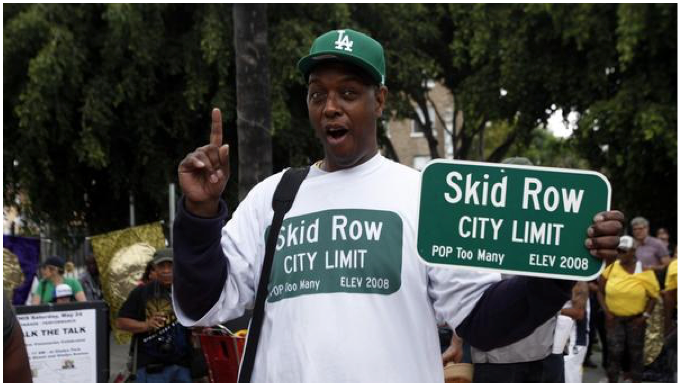


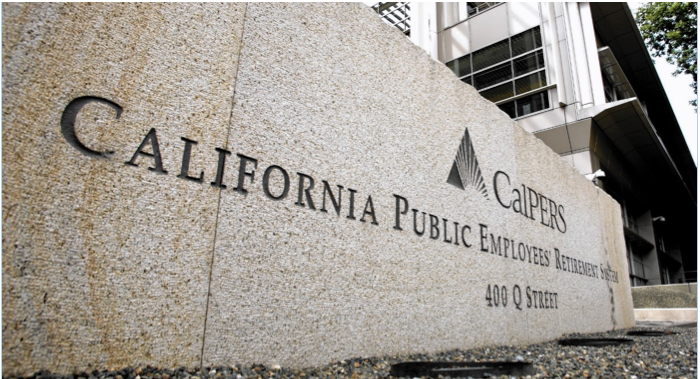
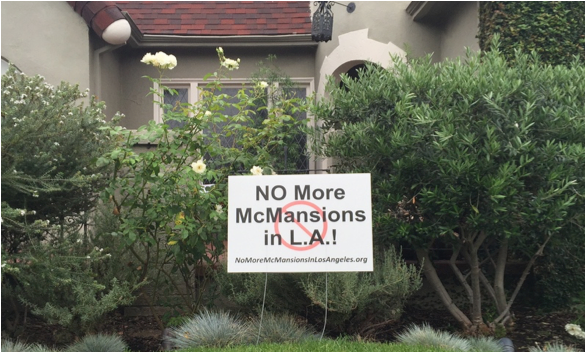


 It’s not the story Reggie Borges, a Starbuck’s spokesman in Seattle, wanted to hear after he had just returned from Austin, Texas where his company launched an expansion of its “food share” program this month to Houston and San Antonio.
It’s not the story Reggie Borges, a Starbuck’s spokesman in Seattle, wanted to hear after he had just returned from Austin, Texas where his company launched an expansion of its “food share” program this month to Houston and San Antonio. 


 The hurdle is that you really need to have every car on the road (and pretty much every other object that can move) under constant centralized control. The buzz word is totally managed systems. Maybe it's a buzz phrase instead of a buzz word, but it carries a heavy load of futuristic thinking. We'll get back to what some of that load entails a little later, but it's worth considering the advantages.
The hurdle is that you really need to have every car on the road (and pretty much every other object that can move) under constant centralized control. The buzz word is totally managed systems. Maybe it's a buzz phrase instead of a buzz word, but it carries a heavy load of futuristic thinking. We'll get back to what some of that load entails a little later, but it's worth considering the advantages. 
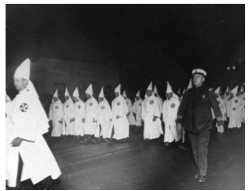 (Left, undated photo of KKK march, possibly taken in Santa Barbara.)
(Left, undated photo of KKK march, possibly taken in Santa Barbara.) 


